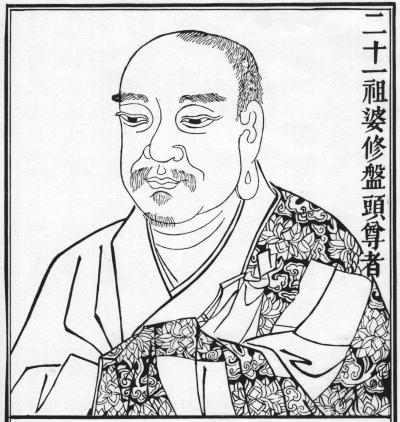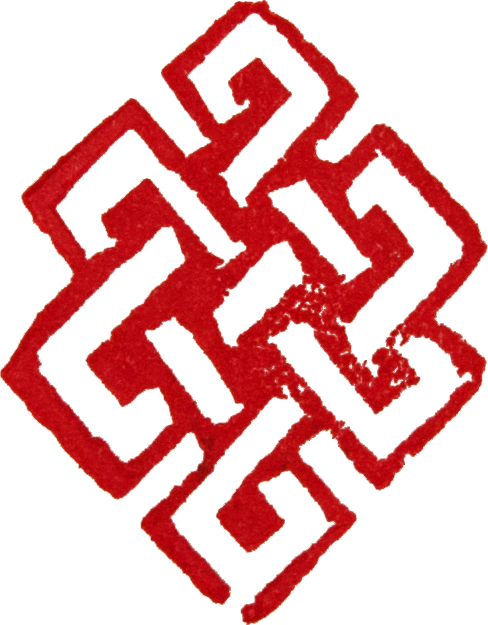
Gandharan monk and yogacara philosopher Vasubandhu as zen patriarch in a chinese illustration. From www.goldsummitmonastery.org/patriarch21.shtml
From wikipedia:
Vasubandhu (traditional Chinese: 世親; ; pinyin: Shìqīn; Tibetan: དབྱིག་གཉེན་ Wylie: dbyig gnyen; fl. 4th to 5th century CE) was an influential Indian Buddhist monk and scholar.[1] He was a philosopher who wrote commentary on the Abhidharma, from the perspectives of the Sarvastivada and Sautrāntika schools. After his conversion to Mahayana Buddhism, along with his half-[citation needed]brother, Asanga, he was also one of the main founders of the Yogacara school.
Vasubandhu’s Abhidharmakośakārikā (“Commentary on the Treasury of the Abhidharma”) is widely used in Tibetan and East Asian Buddhism, as the major source for non-Mahayana Abhidharma philosophy. His philosophical verse works set forth the standard for the Indian Yogacara metaphysics of “appearance only” (vijñapti-mātra), which has been described as a form of “epistemological idealism“, phenomenology[2] and close to Immanuel Kant‘s transcendental idealism.[3] Apart from this, he wrote several commentaries, works on logic, argumentation and devotional poetry.
Vasubandhu is one of the most influential thinkers in the Indian Buddhist philosophical tradition. Because of their association with Nalanda university, Vasubandhu and Asanga are amongst the so-called Seventeen Nalanda Masters.[4][5] In Jōdo Shinshū, he is considered the Second Patriarch; in Chan Buddhism, he is the 21st Patriarch.
Bilingual English/sanskrit edition of ” Seven Works of Vaubandhu” by Stephan Anacker
https://archive.org/details/vasubandhusevenworksofvasubandhustefananackermlbd1986_861_u
The above work includes The Thirty and Twenty verses – Trimsika and Vimsika – commentated by Thich Nhat Hanh in the book “Understanding our Mind”
